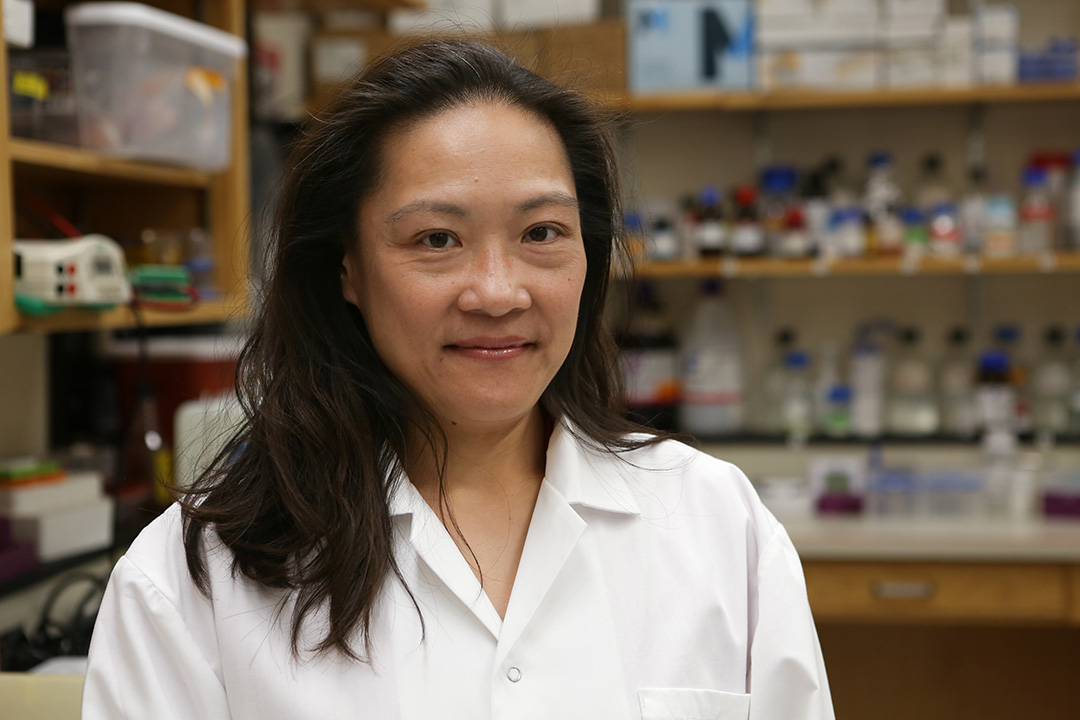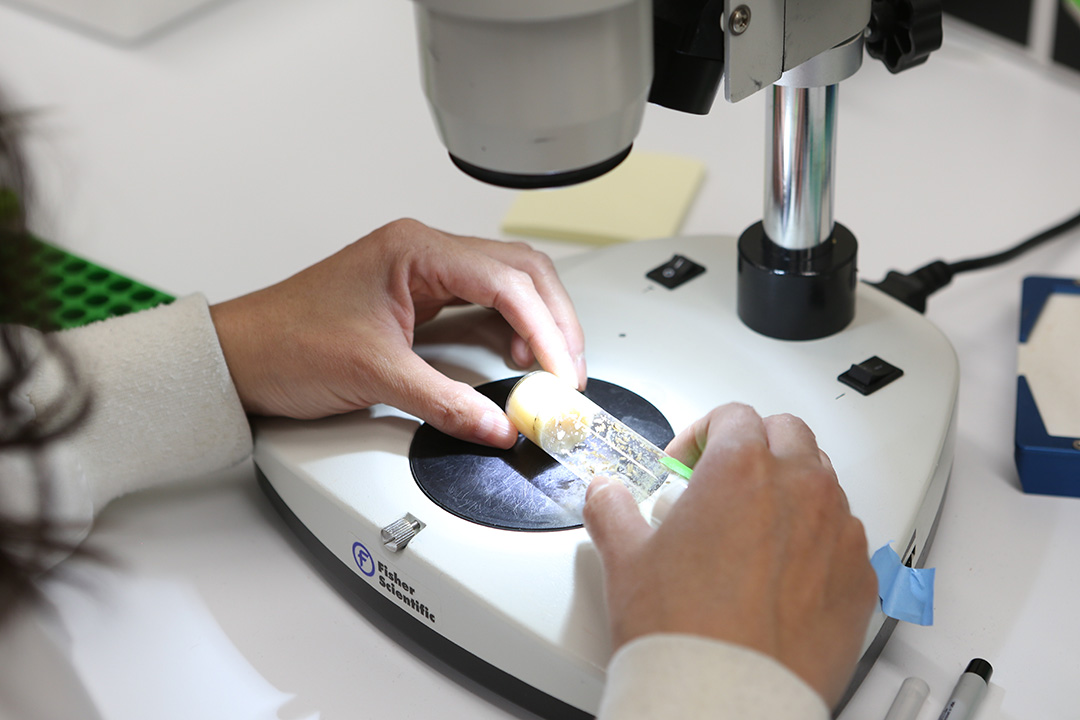
USask scientist receives coveted federal funding for fruit fly metabolism research
Tiny fruit flies are helping Dr. Adelaine Leung (PhD) learn more about how a molecule found in flies as well as people could eventually lead to better, sex-specific approaches for preventing and treating obesity in humans.
By Tyler SchroederNow the University of Saskatchewan (USask) scientist has also gained welcome support from the Canadian Institutes of Health Research (CIHR) through a five-year funding grant of $627,300, announced earlier this spring.
“It’s unbelievable. I know how difficult it is to attain this type of funding, so I feel encouraged to keep pursuing my interests and new opportunities,” says Leung, an assistant professor in the Department of Veterinary Biomedical Sciences at the Western College of Veterinary Medicine (WCVM).
Leung is one of two WCVM faculty members to receive CIHR project funding this year — a rare feat for the WCVM research community. Dr. Tony Ruzzini (PhD), an assistant professor in the college’s Department of Veterinary Microbiology, will receive $841,500 over five years to support research focusing on antimicrobial resistance genes and mechanisms. Both researchers are supported by the CIHR Project Grant program that’s aimed at supporting ideas to advance health research across a range of subject areas.
Dr. Lynn Weber, the college’s associate dean of research and graduate studies, commends Leung and Ruzzini for their persistence and determination in navigating the federal agency’s challenging application process.
“It’s been over a decade since anyone from WCVM has received CIHR project funding,” says Weber. “Applicants for CIHR funding typically apply four to five times before they’re successful, so this is a major accomplishment.”
Over the next five years, Leung and her lab members will use fruit flies as models to explore sex-specific approaches to preventing or treating obesity — a chronic disease in humans. Obesity is a leading cause of type 2 diabetes, high blood pressure, heart disease and other serious health conditions. About one in four adults in Canada are living with obesity, based on pooled data collected from the Canadian Community Health Survey between 2015 and 2018.
Molecules called neuropeptides help regulate and store energy in the human body; humans and fruit flies share a molecule called NUCB1, which acts as a hunger blocking protein.
“Fruit flies are simple organisms that have been used as scientific models for a long time. There is only one copy of this hunger blocking protein in fruit flies, while many organisms contain multiple copies which makes studying them [the proteins] much more complicated,” says Leung.

This protein is a key component in Leung’s research as she investigates the function and differences of NUCB1 between female and male fruit flies. Her team’s work also provides insight into human function of regulating energy metabolism.
“What makes fruit flies unique in experimentation with sex difference is our ability to genetically manipulate cells. There are two ways that sex difference can be regulated: one is through sex hormones and the other is through sex chromosomes within each cell,” says Leung.
Having the ability to genetically manipulate specific cells in each sex has allowed Leung to change the sex of the fruit flies and determine the different effects of cellular chromosomes and systemic hormones.
“We can increase or reduce the function of the NUCB1 in the fruit flies, specifically in a small number of cells and then analyze the feeding behaviours of the animal.”
Leung’s pursuit of more knowledge about the hunger blocking protein began when she was introduced to the topic by one of her WCVM colleagues. Dr. Suraj Unniappan is an endocrinologist who has conducted previous research in the area. When a postdoctoral fellow with feeding behaviour experience applied to join Leung’s lab team at the WCVM, the topic made a great fit.
Securing sustained CIHR funding had been a major goal for Leung — one that took five attempts and revised submissions before achieving. She describes each attempt as a new learning process, gaining valuable insight from reviewers on how to improve her proposal’s focus.
“I found the reviewers’ comments to be very helpful. They guided me toward the most exciting research directions. It's important to have a positive attitude toward feedback from failed applications. Addressing these comments has significantly improved my research.”
Leung acknowledges her former postdoctoral fellow, Dr. Shreyas Jois, who helped initiate this project with his expertise in fruit fly feeding behaviour. Jois now manages the USask Health Sciences’ Histology Core Facility. She’s grateful to her PhD student, Narsimha Pujari, who almost single-handedly generated all the preliminary data for the CIHR grant. Leung is also thankful for the efforts of her master’s student, Yona Al-Tahir, who began exploring NUCB1 function in the fruit fly gut — a novel area for the lab.
The new CIHR funding will enable Leung to expand her lab’s team by recruiting more students, providing valuable research opportunities for young scholars.
“I have a greater sense of security with the new funding, and I am empowered to pursue other projects using the [fruit] fly model,” says Leung. “I see many research projects at the WCVM where using the fly model has the potential to break new grounds. Being at the WCVM is unique opportunity for these collaborative ventures.”
Together, we will undertake the research the world needs. We invite you to join by supporting critical research at USask.
